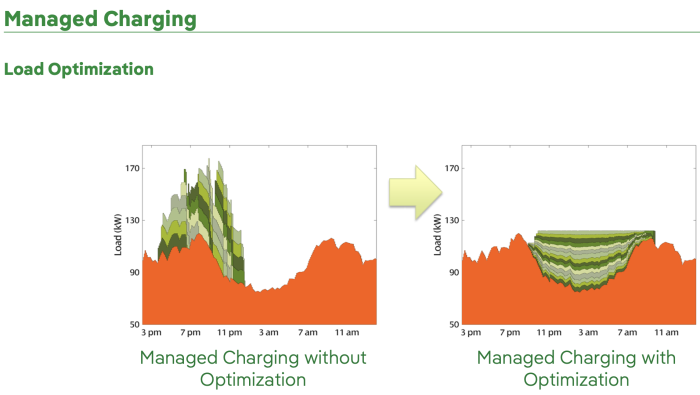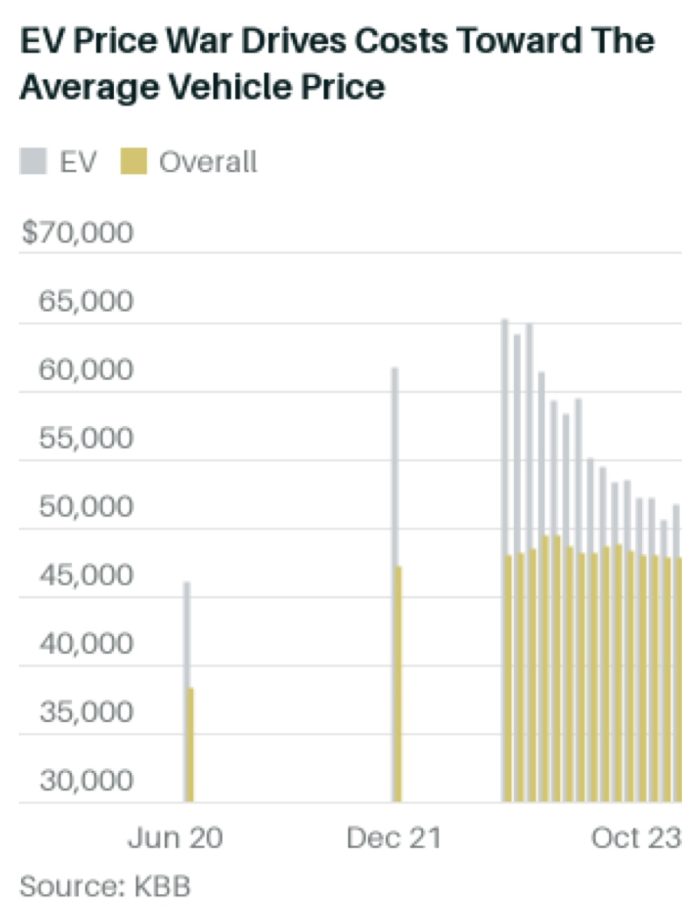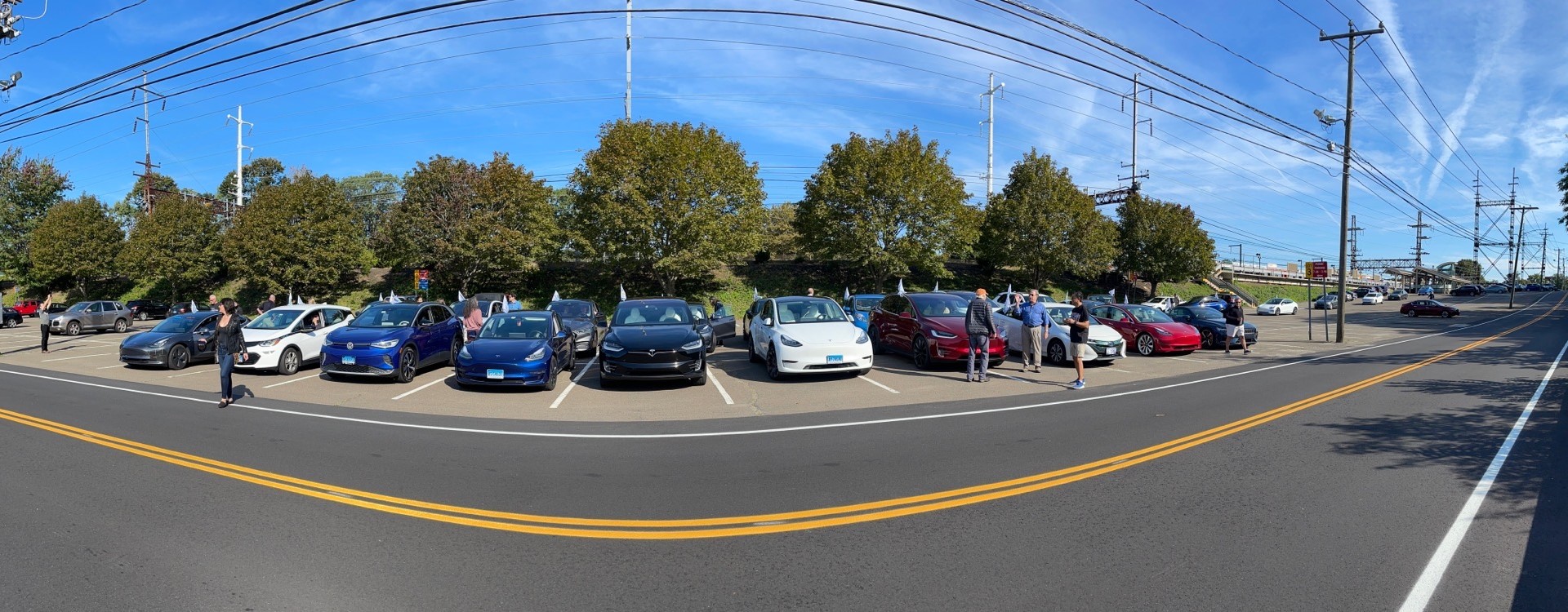Global Temperature Rise is Already 1.2 degrees Celsius above baseline
The reporting coming out of COP 28 is that the mean temperature is already 1.2 degrees Celsius above the pre-industrial baseline and headed to exceed the critical 1.5 degree threshold by the end of this decade. With 10 months of data in hand, 2023 has already been declared the hottest year on record by a margin comfortable enough to be “safe” regardless of what happens in November and December. There is urgency here. It is not just about whether change will happen but how fast.
Transportation Is Low Hanging Fruit
We have to decarbonize everything, but some sectors of the economy are a heavier lift than others.
- Extracting CO2 from the atmosphere and sequestering it in concrete: hard
- Producing enough green hydrogen to power heavy industry: hard
- Aviation: hard
- Ground transportation: relatively easy.
In Connecticut, the transportation sector is the responsible for a larger amount of greenhouse gas (GHG) emissions than any other at about 38% of the total, as reported by the Department of Energy and Environmental Protection (DEEP). EV models are becoming more plentiful all the time and generous incentives are available for purchase and charging.
Advanced Clean Car Regulations II
Connecticut, which has been following California vehicle emission rules for ~20 years and is a signer of the Zero Emissions Vehicle Memorandum of Understanding, has been going through the process of adopting the second phase of the California standards. The first phase expires in 2025.
These regulations, which apply to all classes of vehicles (the earlier regulations only applied to light-duty vehicles) would dramatically lower GHG, as well as particulate matter and nitrogen oxides. Aside from climate benefits, there are significant public health and economic benefits. CT suffers from terrible air quality, and we have the asthma rates to prove it.
A more detailed description of ACC II benefits with data are in this earlier post.
The regulations would require the phasing out of the sale of new internal combustion (ICE) light duty vehicles (and reducing the proportion of ICE heavy duty vehicles) by 2035. A portion of the EVs are permitted to be of the plug-in hybrid variety. ICE vehicles already in the fleet are not banned, nor are sales on the secondary market. It does, however, provide opponents a convenient line of attack as a “ban on gas cars.”
Phase 2 of Advanced Clean Car Regulations Blocked by Legislative Regulation Review Committee
Against this background, the legislature has blocked ACC II. The final step of the approval process, the step that follows legislative authorization, DEEP rule making, public comment, DEEP response, and a determination of legal sufficiency by the Attorney General’s office, is for a bipartisan legislative committee to make a determination regarding whether the regulations comport with legislative intent. The remit of the committee is narrow, but a GOP-led effort took it upon themselves to decide to overrule what had been authorized.
The bipartisan committee is made up of 8 members of each party, unlike the legislature as a whole where the Democrats hold a 2:1 edge. The regulations needed at least a tie vote to pass but all of the Republicans were against it and two Democrats, reportedly Senators Osten and Hartley, were wavering with at least one being a likely negative vote. With prospects cloudy, the governor pulled the regs before the vote.
It’s Not Over
The legislature could still authorize it. Democratic leadership will take the temperature of the caucus early in the coming week and then decide whether to raise it before the full body. The outlook isn’t particularly encouraging at this point.
Freedom!
House Minority Leader Vincent J. Candelora, R-North Branford, an opponent of the regulations, as reported in the CT Mirror, said, “This is about protecting the residents of Connecticut and providing them choice.”
It feels good to know we are now protected, that we have the freedom to breathe dirty air, the freedom to do nothing to mitigate climate change, and the freedom to signal that new green economy jobs should go to other states.
In effect, Mr. Candelora and his colleagues are saying, “Let the market drive EV adoption,” a.k.a. the “business as usual case.” The point of policy is to accelerate the curve faster than BAU. A GOP flyer labels this the “ban without a plan.” This removes the context because, in fact, there is a plan. These are a few points regarding objections raised about the grid, charging infrastructure, and EV costs.
Grid
- As we move to a carbon-free society where everything is electric, it will be necessary to upgrade the grid. That is why DEEP and the Public Utilities Regulatory Authority (PURA) have a grid modernization docket.
- EVs are relatively grid-friendly since so much of the charging is done at night, during off peak times. This is a slide from the presentation that United Illuminating gave at the Club’s Northeast Electric Vehicle Symposium in September illustrating the benefits of off-peak EV charging:

- There is already a program in place that incentivizes Eversource and UI customers with home charging to charge during off-peak periods.
Charging Infrastructure
- There are over 700 public charging stations with over 2000 ports in CT, per the Department of Energy for the roughly 35,000 EVs, of which about 23,000 are fully electric. (And, yes, we know that vehicles transiting the state need to charge as well.) But, we’re not starting from a bad place. The number of chargers needs to grow along with the increase in EV adoption, and the chargers have to be available throughout the state.
- The federal Infrastructure and Jobs Act was passed about 2 years ago. Between the federal funds and state matching funds, there will be over $60 million invested in public EV charging stations. There have been no shovels in the dirt as yet, as the process took a while to get finalized. DOT expects installations to begin in 2024.
- There are incentives for the purchase and installation of EV chargers for both residential and commercial customers, developed by PURA and available through Eversource and United Illuminating. Some of the municipal utilities are offering incentives, as well.
- EV chargers are eligible for grants from the pool of Volkswagen “dieselgate” settlement funds.
EV Costs
- It is true that the purchase price of an EV is higher than a comparable internal combustion (ICE) vehicle. But it’s not that much higher, at least according to recent data published by the Kelly Blue Book:

These prices do not take into account incentives. At the present moment, assuming all qualifications are met, a buyer of a new electric vehicle can get a $7500 federal incentive and a $2250 CT incentive. CT also offers a higher incentive for lower income buyers. See our incentives page for more detail.
- Including operating and maintenance costs, in other words, the total cost of ownership, EVs are more economical relative to ICE. According to the Natural Resources Defense Council: “Bottom line: You can bank on saving across the life of your electric vehicle.” According to Money Magazine: “Upfront costs may be higher for EVs, but these cars are also much cheaper to operate and maintain — and the savings can add up. Over the life of your car, you will often spend less by buying electric.”
- EV prices will definitely come down going forward. The technology continues to advance across the board, but two reasons in particular are battery costs and scale.
- Bloomberg New Energy Finance states, “BNEF expects average battery pack prices to drop again next year, reaching $133/kWh (in real 2023 dollars). Technological innovation and manufacturing improvement should drive further declines in battery pack prices in the coming years, to $113/kWh in 2025 and $80/kWh in 2030.” $100 per kWh is considered cost-parity with ICE.
- Outside of Tesla, none of the manufacturers have thus far fully benefited from scale economics. That will change. These proposed regulations will accelerate that change.
Flexibility
Moving to EVs, let alone decarbonizing the economy overall, involves a complicated policy landscape at the federal, state, and even municipal level. Everyone recognizes this. In fact, in the FAQ document prepared by DEEP, it is stated, “If we get to a point where it appears that the technology or the infrastructure deployment is such that we would not be able to meet the standards, the standards will change to help suit our needs. This has happened on several occasions in the past with the California standards.”
The vision of a hellscape where many cannot afford a car, and those that can will get stuck is simply not going to happen.
We would like to call out a very good myth vs reality opinion piece published in CT News Junkie, written by Rep. Christine Palm.
You Can Help
Without these regulations, we are back to a world where we really do have no plan, where we are back to passing non-binding resolutions that don’t deliver results.
You can help. Reach out to your legislator and tell them you support adoption of ACC II.
The big environmental advocacy groups, such as Save the Sound, CT League of Conservation Voters, and the Sierra Club are telling folks to reach out to Democrats since it is assumed there will be no Republican support and the Dems control the legislative agenda. We would encourage contacting your legislator regardless of party. CT participation in the original California standards had near-unanimous bipartisan support. There was some Republican support for these latest regs. It is unfortunate that clean vehicles and the environment have become part of the culture war.
Policy Matters
As a closing note, Bloomberg New Energy Finance reported this week that the Inflation Reduction Act is responsible for about $100 billion of newly announced investments in EV and battery plants. ACC II is complementary policy that will enable manufacturers to scale more quickly and for consumers to make use of the output of these new manufacturing facilities.
CT air quality is not in compliance with federal standards. Electrifying transportation is the easiest way for us to get there. If these regulations ultimately do not get enacted, the way forward will be harder, and in all likelihood, we will face a future that remains out of compliance indefinitely.

